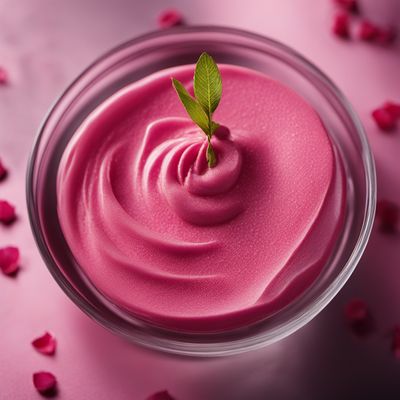
Ingredient
Flower pistil spices
Fragrant Gems: Unveiling the Delicate Flavors of Flower Pistil Spices
Flower pistil spices are derived from the reproductive organs of flowers, specifically the pistils. These spices are known for their exquisite aromas and delicate flavors, which can range from floral and sweet to earthy and musky. The pistils are carefully harvested and dried to preserve their flavors and are often used in small quantities due to their potent nature. With their vibrant colors and intricate structures, flower pistil spices also add visual appeal to dishes. Their texture can vary depending on the specific spice, ranging from fine powders to slightly coarse grains. Overall, flower pistil spices are a true treasure in the culinary world, elevating dishes with their unique characteristics.
Origins and history
The use of flower pistil spices dates back centuries and can be traced to various cultures around the world. In ancient times, civilizations such as the Egyptians, Greeks, and Romans recognized the value of these spices and incorporated them into their cuisines and medicinal practices. Flowers like saffron, derived from the crocus flower, have a rich history and were highly prized in ancient Persia and throughout the Middle East. Today, flower pistil spices continue to be cultivated and used in diverse culinary traditions, adding a touch of elegance and sophistication to dishes.
Nutritional information
Flower pistil spices are generally low in calories and fat. While they are not significant sources of macronutrients, they do contain various vitamins, minerals, and antioxidants that contribute to overall health and well-being.
Allergens
Flower pistil spices are generally considered safe for consumption and are not commonly associated with allergens. However, individuals with known allergies to specific flowers should exercise caution and consult with a healthcare professional if unsure.
How to select
When selecting flower pistil spices, look for vibrant colors and avoid any signs of moisture or clumping, as this may indicate poor quality or improper storage. Opt for reputable brands or sources that provide information on the origin and quality of the spices.
Storage recommendations
To maintain the freshness and quality of flower pistil spices, store them in airtight containers in a cool, dark place away from direct sunlight. This helps preserve their delicate flavors and prevents moisture absorption.
How to produce
Flower pistil spices are typically produced through meticulous harvesting and drying processes. Amateur gardeners can grow certain flowers, such as saffron crocus or lavender, in their gardens and carefully collect the pistils for drying. However, it is important to note that producing flower pistil spices on a larger scale requires specialized knowledge and expertise.
Preparation tips
Flower pistil spices should be used sparingly due to their potent flavors. To release their aromas and flavors, it is recommended to infuse them in warm liquids or grind them into fine powders before incorporating them into dishes. They are commonly used in desserts, teas, rice dishes, and sauces, adding a touch of elegance and complexity to the final creations.
Culinary uses
Flower pistil spices are widely used in various culinary applications. Saffron, for example, is a key ingredient in paella, risotto, and certain desserts. Rose and lavender are often used in baking, infusing their floral notes into cakes, cookies, and creams. Hibiscus is commonly used to make teas, cocktails, and sauces, providing a tangy and vibrant flavor. These spices can also be used to enhance the flavors of savory dishes, such as stews, marinades, and dressings.
Availability
Flower pistil spices are commonly available in regions where the respective flowers are cultivated. Saffron, for instance, is prevalent in Iran, Spain, and India, while lavender is commonly found in France and certain parts of the United States. Rose and hibiscus are cultivated in various countries around the world.


